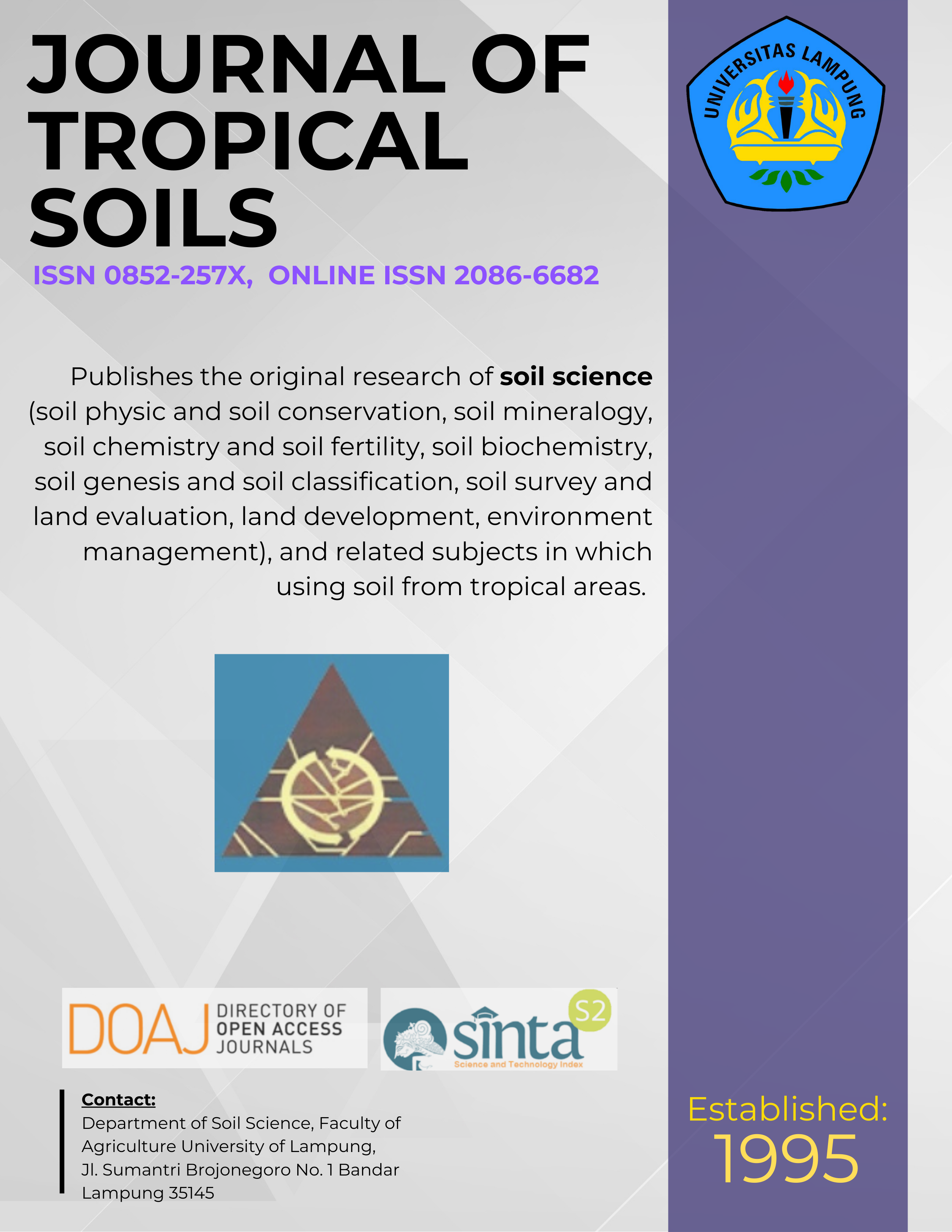Water Management “Tabat System†in Carbon Dioxide Mitigation and Vulnerability to Fire On Peatland
Main Article Content
Abstract
The conservation measures of peat or peat maintain under natural conditions many proposed to address the increase in carbon emissions from land use change and efforts to minimize of fire, but it can not entirely implemented due to peat land has the potential for development of the agricultural commodities is supported by extensive area. Peatlands can be productive agricultural land with appropriate methods. Water management is required to regulate groundwater levels which is suitable for plants, nature conservation and restore hydrological conditions, such as reducing the vulnerability to fire. The percentage of water content vertically and functional groups of organic materials that have both hydrophilic and hydro phobic properties can be an indicator of vulner ability to fire. This research was conducted by survey method and then field sampling on land use rubber. Water management carried out with the installation of water-gate in the drainage channels (Tabat System). There are two experimental units in peatland, namely: 1) the drainage channel is equipped with the water-gate/Tabat (KST), Tabat size adjusted to the channel dimensions, and 2) there are no water-gate on the drainage channel (KNT). The parameters are observed of CO2 fluxes, ground water levels, water content and functional groups of organic matter. The purpose of this study was to determine the role of “tabat system†in mitigating CO2 emission sand vulner ability tofire. The results showed that the water management “tabat system†can reduce CO2 emissions by 47.6%, reducing hydrophobic properties of peat (0-50 cm soil depth) of 6.6% and is able to prevent loss of water-holding ability of fibric peat by 26.6%. This indicates that water management measures is required as one effort to maintain of peat to remain moist condition, so that changes in peat properties of hydrophilic become hydrophobic can be prevented, and reduce peat vulnerability to fire.
Keywords: Carbon dioxide emissions, Peatland, Vulner ability to fire, Water management
[How to Cite: Siti Nurzakiah, Nurita and Dedi Nursyamsi. 2016. Water Management “Tabat System†in Carbon Dioxide Mitigation and Vulnerability to Fire On Peatland. J Trop Soils 21: 41-47. Doi: 10.5400/jts.2016.21.1.41]
Â
Downloads
Article Details
Section
License for Authors
Authors who publish with this journal agree to the following terms:
- Authors retain copyright and grant the journal right of first publication with the work simultaneously licensed under a Creative Commons Attribution License that allows others to share the work with an acknowledgement of the work's authorship and initial publication in this journal.
- Authors are able to enter into separate, additional contractual arrangements for the non-exclusive distribution of the journal's published version of the work (e.g., post it to an institutional repository or publish it in a book), with an acknowledgement of its initial publication in this journal.
- Authors are permitted and encouraged to post their work online (e.g., in institutional repositories or on their website) prior to and during the submission process, as it can lead to productive exchanges, as well as earlier and greater citation of published work (See The Effect of Open Access).
License for Regular Users
Other regular users who want to cite, distribute, remix, tweak, and build upon author’s works, even for commercial purposes, should acknowledge the work’s authorship and initial publication in this journal, licensed under a Creative Commons Attribution License.

